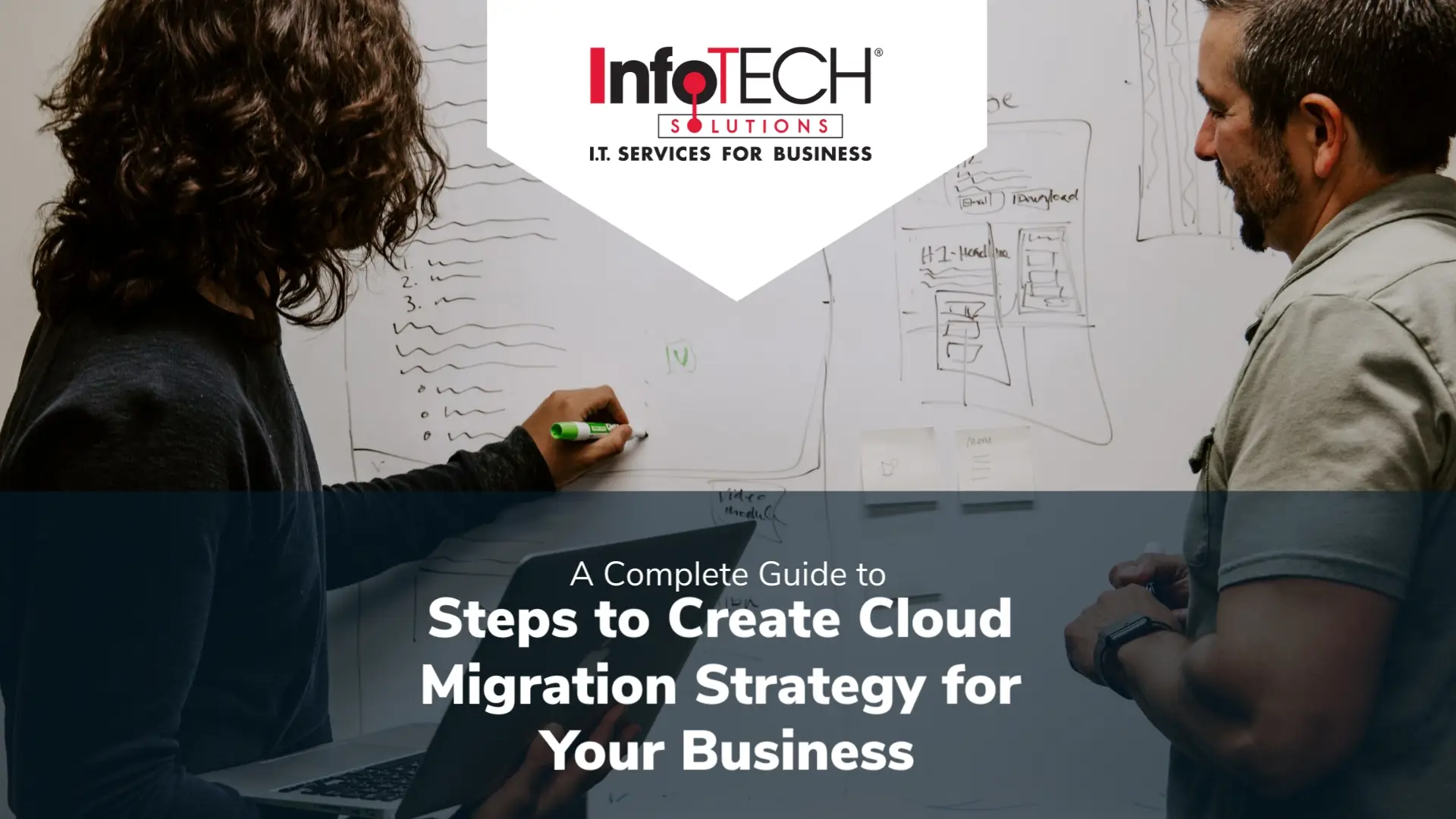As the business landscape continues to evolve, the shift to cloud-based solutions can be a daunting prospect. Many businesses struggle with outdated systems and the increasing demand for efficient, scalable, and secure data management.
A study by Zippia found that 94% of enterprises use cloud services, and 67% of enterprise infrastructure is now cloud-based.
Additionally, 92% of businesses have a multi-cloud strategy in place or in the works, highlighting the extensive adoption of cloud services across various business sectors
As Brian Leger, Co-Founder of InfoTECH Solutions, says,“Migrating to the cloud enhances operational flexibility, data security, and cost efficiency.”
A well-crafted cloud migration strategy is essential in navigating this transition smoothly, avoiding common pitfalls that can lead to significant business disruptions.
Understanding Cloud Migration Strategy
A cloud migration strategy is a comprehensive plan for moving digital business operations into the cloud. This strategy typically involves the transfer of data, applications, and IT processes from on-premises data centers to cloud environments.
With cloud migration, businesses can benefit from increased flexibility, improved disaster recovery capabilities, and often, a reduction in operational costs.
Concerned About Cloud Migration Costs?
InfoTECH Solutions offers cost-effective cloud migration tailored to your budget.
Get stared5 Steps to Create a Successful Cloud Migration Strategy
1. Develop Your Cloud Migration Plan
- Assessment and Planning: The first step is to assess your existing application and infrastructure landscape. Understand which applications are ready to move to the cloud and which may need rearchitecting. A thorough assessment helps in aligning your business objectives with your cloud strategy.
- Choosing the Right Cloud Environment: Decide between public cloud, private cloud, or a hybrid cloud approach. Each offers different levels of control, flexibility, and cost. Your choice should be guided by your specific business needs and compliance requirements.
- Migration Strategies and Approaches: There are various cloud migration strategies to consider, such as rehosting (lift-and-shift), refactoring, or rebuilding. Choose a strategy that aligns with your business goals and the cloud-native features you aim to utilize.
- Execution and Migration: Implement the chosen cloud migration strategies. This phase involves the actual moving of applications, data, and other components to the cloud infrastructure.
- Optimization and Management: After migration, continuously monitor and manage your cloud resources. Optimization for performance and cost is an ongoing process in a cloud environment.
2. Address Security and Compliance
Security in the cloud is crucial. Nearly 90% of IT professionals and business leaders agree that security is the most critical determinant of success for a cloud strategy.
Ensure that your cloud migration plan includes robust security measures, compliant with industry standards. This might include data encryption, identity and access management, and regular security audits.
3. Leverage Cloud Services
Cloud computing offers a range of services such as Infrastructure as a Service (IaaS) and Software as a Service (SaaS). Leveraging these services can enhance your business’s flexibility and scalability.
4. Ensure Business Continuity
A successful cloud migration should include strategies for disaster recovery and real-time data backup, ensuring business continuity even in the event of unforeseen disasters.
5. Training and Support
Ensure that your team is well-trained and supported throughout the migration process. This helps in minimizing disruptions and making the most of your new cloud infrastructure.
Key Steps in Cloud Migration Strategy
| Step | Description | Considerations |
| 1. Assessment and Planning | Evaluate current IT infrastructure, applications, and workloads. Identify what can be moved to the cloud and the necessary changes. | Business needsTechnical feasibilityCost-benefit analysis |
| 2. Choosing a Cloud Environment | Decide on the type of cloud environment (public, private, or hybrid) based on business needs, budget, and security requirements. | Compliance requirementsScalability needsBudget constraints |
| 3. Strategy Development | Develop a migration strategy (rehosting, refactoring, rebuilding) that aligns with business objectives and technical requirements. | Downtime minimizationResource allocationRisk management |
| 4. Execution and Migration | Implement the migration plan, moving data, applications, and services to the cloud environment. | Data integritySecurity protocolsMonitoring and support |
| 5. Optimization and Management | Continuously monitor and manage cloud resources. Optimize for performance, security, and cost. | Cost controlPerformance metricsSecurity updates |
| 6. Maximizing Post-Migration Benefits | Utilize cloud analytics, AI, and collaboration tools to enhance business operations. Focus on scalability, cost management, and customer experience improvements. | Innovation and customer engagementScalability flexibilityCollaboration enhancements |
Maximize the Benefits of Cloud Migration
Another crucial aspect of a cloud migration strategy involves maximizing the benefits post-migration. This is where businesses can truly start to see the return on their investment in cloud technology. Here are key factors to consider:
- Leverage Cloud Analytics and AI: Utilize cloud-based analytics and artificial intelligence to gain insights from your data in real-time. This can drive better decision-making and open new opportunities for innovation and customer engagement.
- Cost Management and Optimization: Migrating to the cloud can offer cost benefits but requires ongoing management. Utilize cost management tools provided by cloud service providers to monitor and optimize your spending.
- Scalability and Flexibility: One of the significant advantages of the cloud is scalability. Businesses should take advantage of this by scaling resources up or down based on demand, ensuring efficiency and cost-effectiveness.
- Enhance Collaboration and Productivity: Cloud environments facilitate easier collaboration across teams and locations. Leveraging cloud-based collaboration tools can significantly boost productivity and team dynamics.
- Regularly Update and Innovate: The cloud environment is dynamic and constantly evolving. Regularly update your systems and explore new cloud-native features to stay ahead of the curve.
- Focus on Customer Experience: Use the cloud to enhance your customer experience. Cloud technologies can help in providing more personalized services and engaging with customers in more meaningful ways.
More resources you might like:
Perfect Your Cloud Migration Strategy With InfoTECH Solutions

Adopting and maximizing a cloud migration strategy is not just a technical shift but a strategic move that can redefine how businesses operate. From planning to post-migration optimization, every step is crucial for a transformative journey.
InfoTECH Solutions, with 19 years of experience, offers the expertise and support needed for businesses to navigate this transition smoothly.
Reach out to us to schedule a free consultation, paving the way for your business to thrive in the cloud era.



